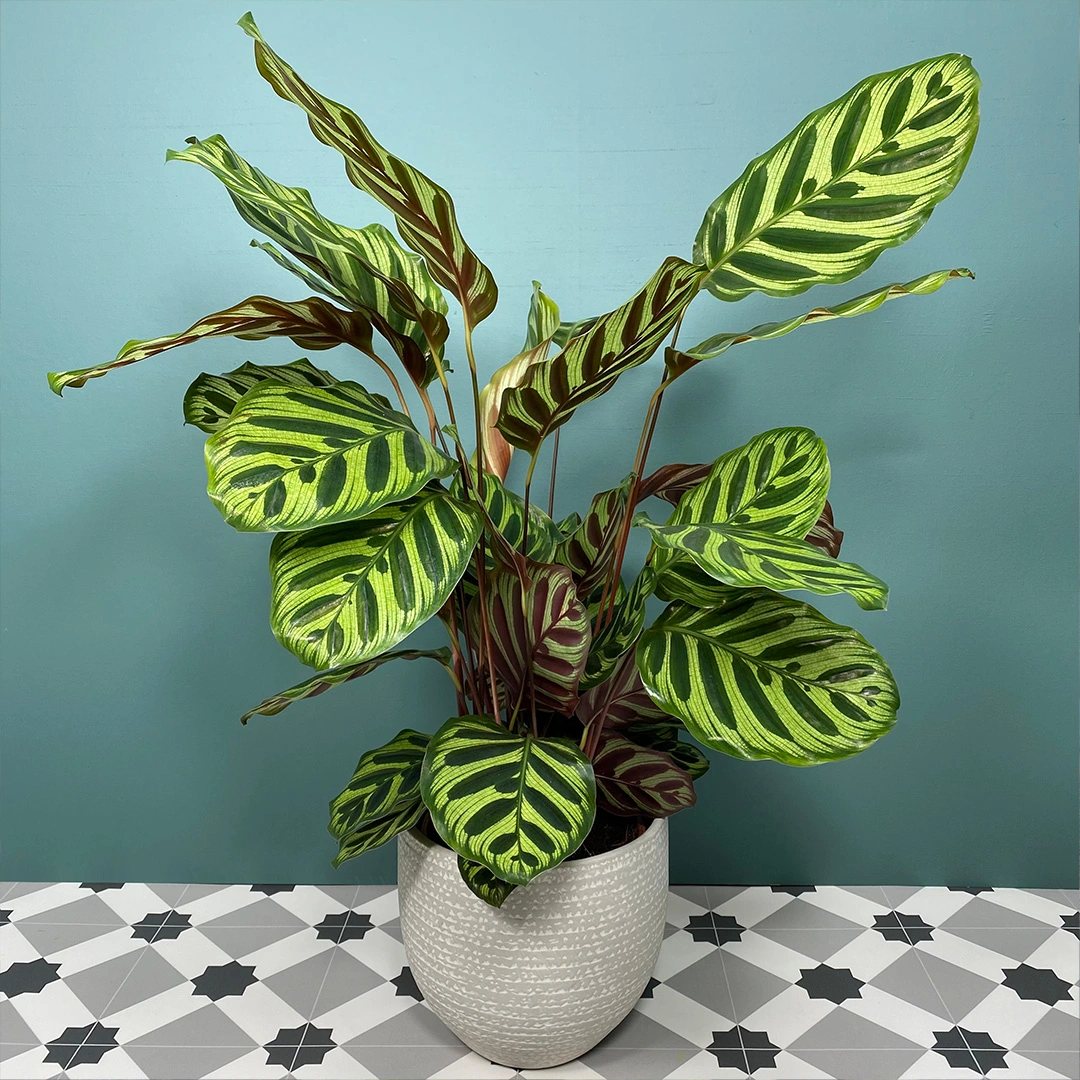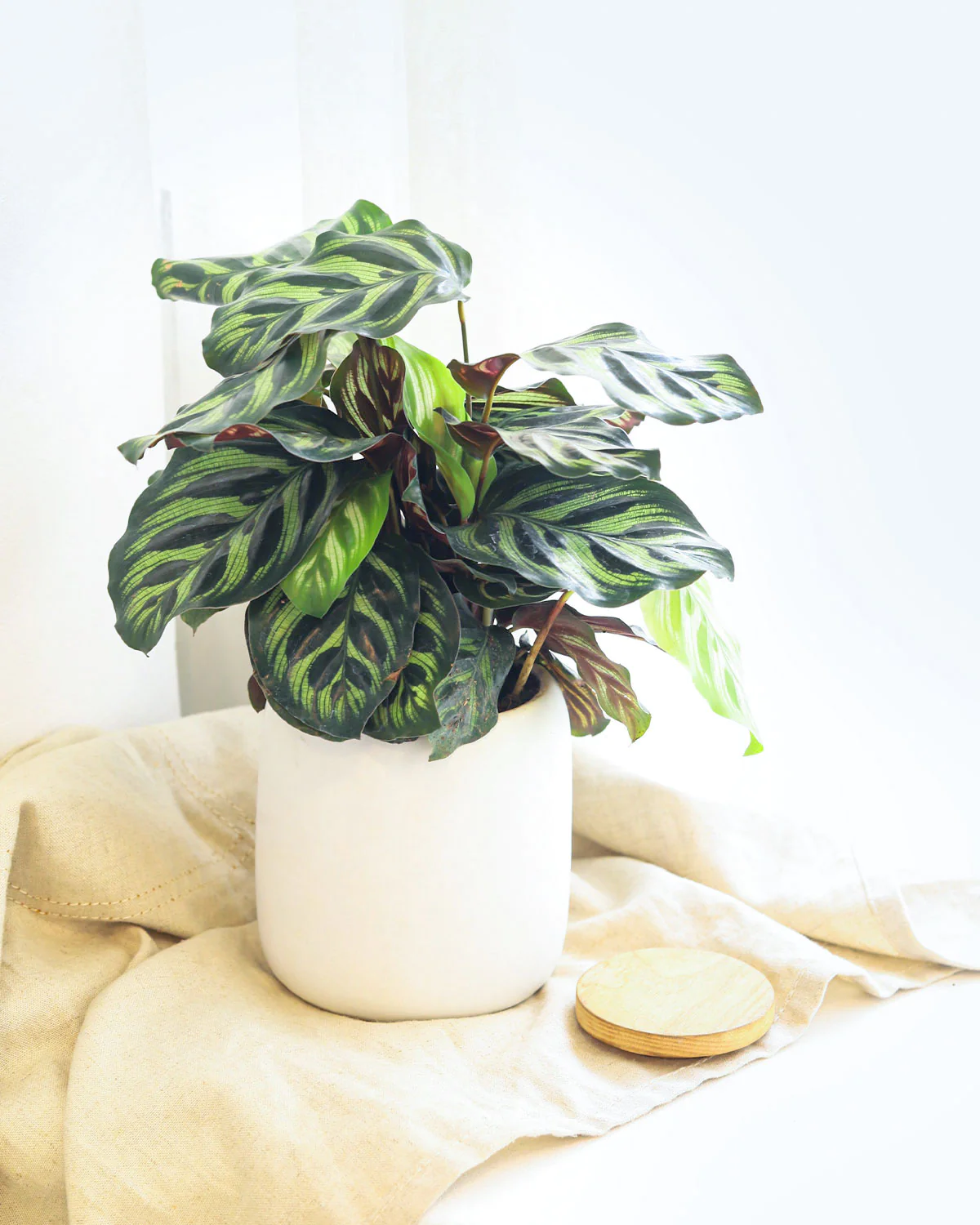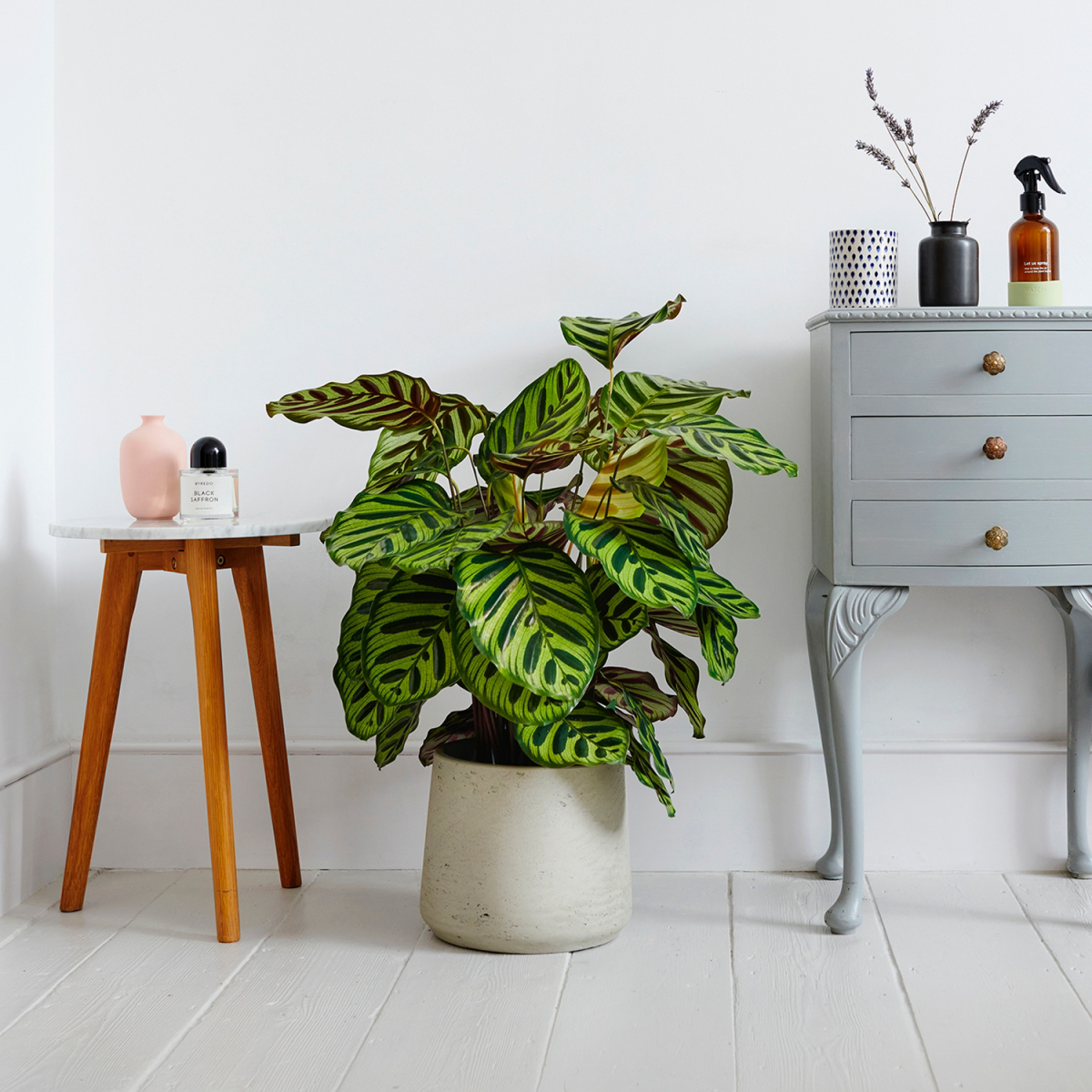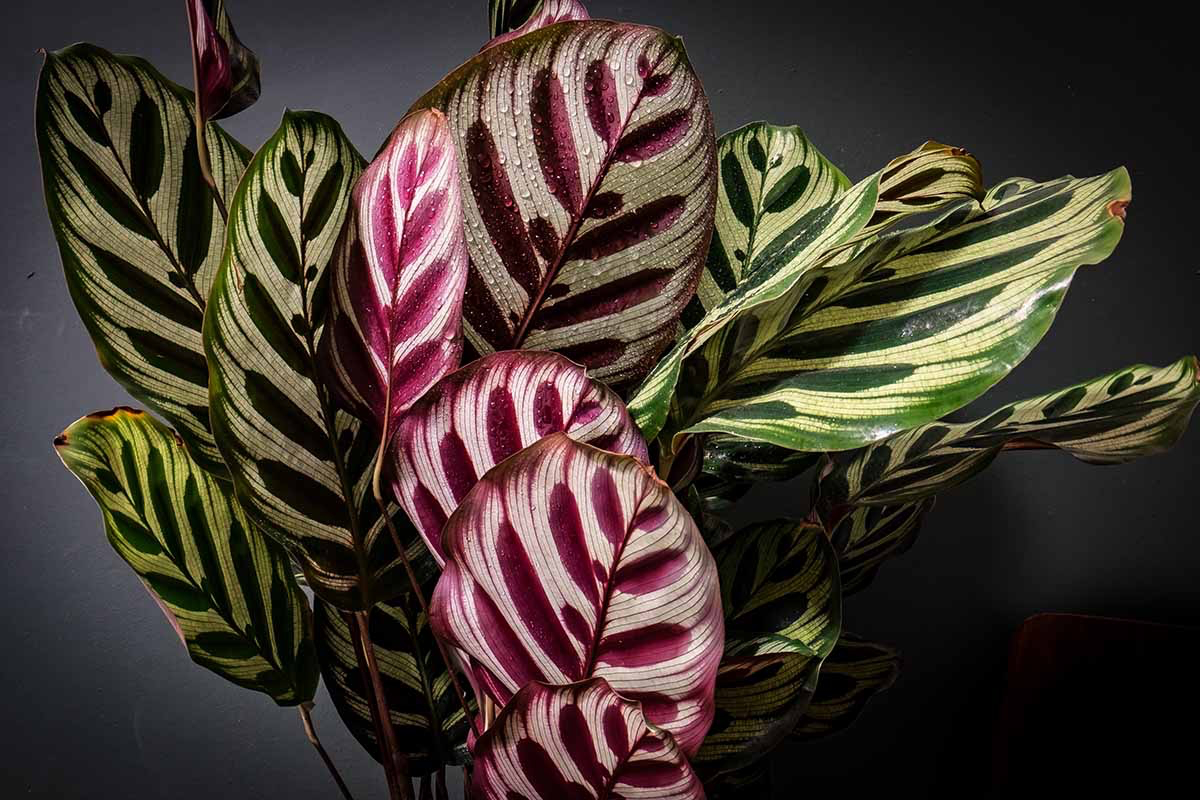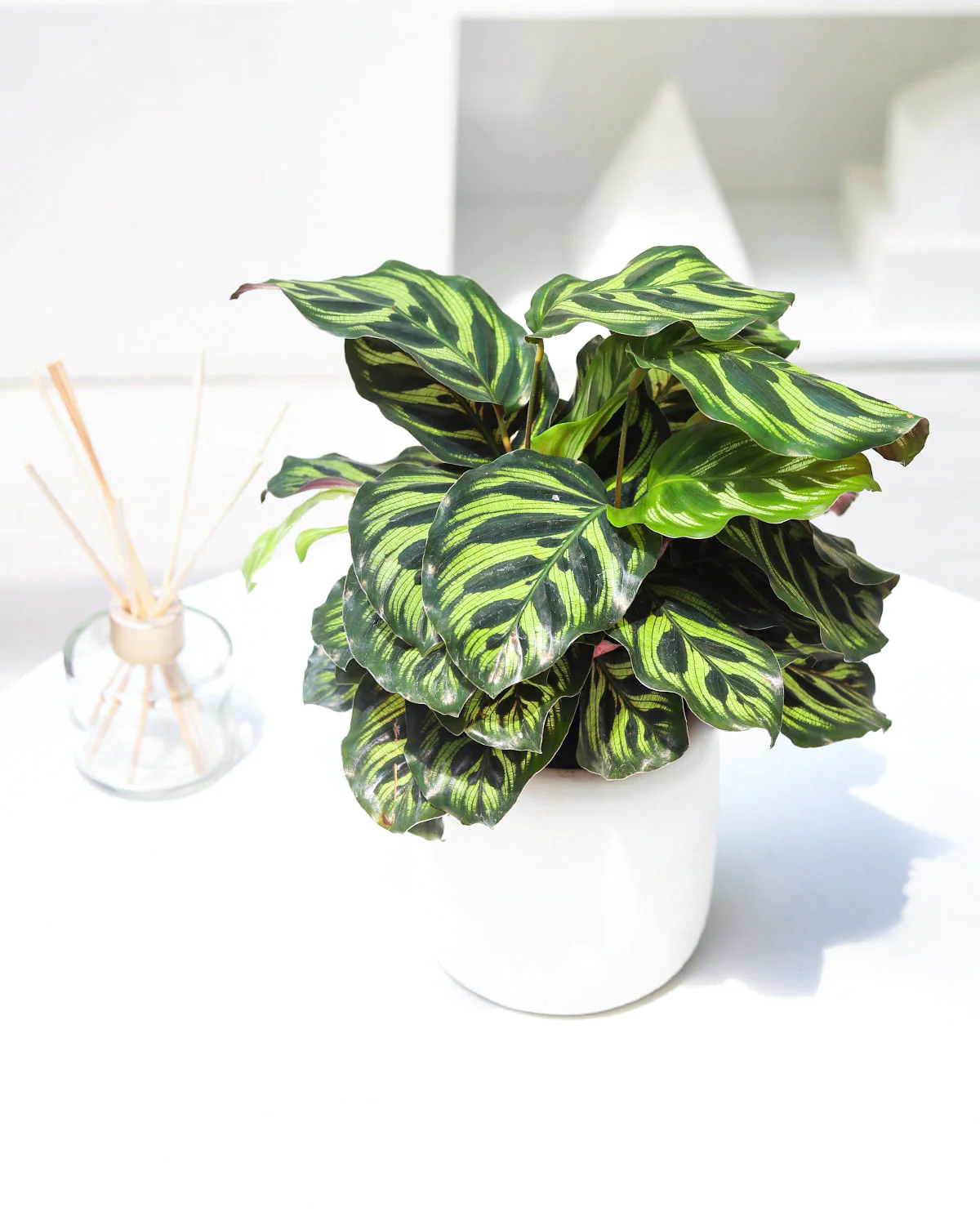A Complete Guide for Taking Care of a Peacock Plant
Welcome to the enchanting realm of the Peacock Plant, where nature’s artistry meets indoor gardening. With its vibrant, feather-like foliage, this plant has captured the hearts of many plant enthusiasts. In this comprehensive guide, we’ll take you through everything you need to know about caring for this stunning botanical gem. From its intriguing benefits to placement tips, you’re about to embark on a journey of verdant elegance.
Time to learn how to take proper care of a peacock plant
In this article
A Complete Guide for Taking Care of a Peacock Plant
The Peacock Plant Unveiled
Imagine the lush greenery of a tropical rainforest, and at its heart, you’ll find the Peacock Plant (Calathea makoyana). Also known as the Cathedral Windows, this plant derives its common name from the striking patterns on its leaves. Its lance-shaped, feather-like foliage boasts a rich palette of colors, featuring deep green hues, accented by delicate brushstrokes of creamy white and rosy pink. This plant is truly a work of art in the world of houseplants.
This plant gets its name from the striking patterns on its leaves
Basic Tips for Taking Care of a Peacock Plant
Caring for your Peacock Plant (Calathea makoyana) is akin to tending to a work of art. Its vibrant, feather-like foliage demands attention and care, ensuring it remains a botanical masterpiece in your home. In this detailed care guide, we’ll delve deeper into the essential aspects of nurturing your Peacock Plant, helping you create the perfect conditions for its well-being and aesthetic allure.
Time to learn how to take care of this a botanical masterpiece
Optimal Environment: Replicating the Rainforest
The Peacock Plant’s heart lies in the lush embrace of a tropical rainforest, and your goal is to recreate this environment as closely as possible within your home. Here’s how:
- Light Requirements: Place your Peacock Plant in a location that offers bright, indirect light. These plants thrive in filtered sunlight, so avoid exposing them to direct sun rays, which can scorch and damage their delicate leaves. If your home lacks bright natural light, you can supplement with artificial grow lights placed at a moderate distance from the plant.
- Temperature: Maintaining a warm temperature is crucial for the Peacock Plant’s happiness. Aim for a consistent range between 65-80 °F (18-27 °C). Ensure it’s shielded from drafts and sudden temperature fluctuations, particularly during the colder months.
This houseplant loves bright, indirect light and warm temperatures
Embracing Humidity: A Must for Peacock Plants
One of the Peacock Plant’s defining characteristics is its love for humidity. This botanical diva thrives in a moist atmosphere reminiscent of its rainforest habitat. To provide the humidity it craves:
- Misting: Regularly misting the leaves with room-temperature water is an effective way to increase humidity around your Peacock Plant. Ensure the mist is fine and gentle, avoiding heavy droplets that can damage the foliage.
- Pebble Tray: Set up a pebble tray beneath your plant. Fill it with water and place the potted Peacock Plant on top of the pebbles, ensuring the pot doesn’t touch the water’s surface. As the water evaporates, it elevates the humidity level in the immediate vicinity.
- Humidifier: For a more consistent and controlled humidity boost, consider using a room humidifier. This is particularly beneficial in homes with dry indoor air, which is common during the winter months when central heating is in use.
The peacock plant is a big fan of high humidity
Mastering Watering Wisdom
Watering your Peacock Plant correctly is paramount to its well-being. Here’s a comprehensive approach to watering this moisture-loving botanical beauty:
- Soil Moisture: The key to successful watering is to keep the soil consistently moist but never waterlogged. Allow the top inch (2.5 cm) of the potting mix to dry out slightly between waterings. Insert your finger into the soil; if it feels dry at this depth, it’s time to water. If it’s still slightly moist, wait a day or two before checking again.
- Water Quality: The Peacock Plant appreciates lukewarm, filtered water. Using water that’s too cold or contains excessive chlorine can shock the roots and damage the plant. You can let tap water sit out for 24 hours to allow chlorine to dissipate, or use filtered water.
- Drainage is Vital: Ensure your Peacock Plant is in a pot with good drainage. This prevents water from accumulating at the bottom, which can lead to root rot. Empty the saucer beneath the pot promptly after each watering to avoid stagnant water.
Knowing how and when to water your plants is the key to their health
Feeding Your Verdant Masterpiece
Your Peacock Plant’s feeding schedule should align with its natural growth patterns. Follow these guidelines to nourish your plant effectively:
- Growing Season: During the growing season, which typically spans from spring through early autumn, your Peacock Plant will benefit from regular feeding. Use a balanced, diluted liquid fertilizer designed for houseplants. Apply the fertilizer every 4–6 weeks to provide essential nutrients that support healthy growth and vibrant foliage.
- Winter Dormancy: In winter, your Peacock Plant may enter a period of dormancy, during which its growth slows down. During this time, reduce feeding to give the plant a rest. While it may not require as many nutrients, continue to monitor its moisture levels and maintain humidity to keep it comfortable.
Your peacock plant will benefit from regular fertilization
By following these comprehensive care guidelines, you’ll not only keep your Peacock Plant thriving, but also showcase its mesmerizing foliage to its fullest potential. With the right balance of light, humidity, and watering, your Peacock Plant will continue to enchant you and your guests with its captivating beauty. Remember that every plant is unique, and it may take some trial and error to find the perfect care routine for your Peacock Plant. Monitor its condition and adjust your care as needed to keep this botanical gem flourishing in your home.
Now you know the basics for taking care of this lush houseplant
Benefits of the Peacock Plant
Aside from its aesthetic appeal, the Peacock Plant offers several benefits to your indoor environment. Its lush foliage acts as a natural air purifier, filtering out pollutants and enhancing air quality. By releasing oxygen during the day and absorbing carbon dioxide at night, it contributes to a healthier home atmosphere. Additionally, caring for houseplants like the Peacock Plant can have therapeutic effects, reducing stress and boosting your mood.
This plant will help keep your indoor air quality in check
Who Should Welcome the Peacock Plant?
The Peacock Plant is a fantastic addition to any home, but it’s particularly well-suited for individuals who appreciate the beauty of lush, intricate foliage. Its low-to-moderate maintenance requirements make it an excellent choice for both experienced plant parents and beginners. If you’re looking for a houseplant that’s as visually captivating as it is beneficial for your well-being, the Peacock Plant might be the perfect match.
The peacock plant is a great choice for both experienced plant parents and beginners
Who Should Tread with Caution?
While the Peacock Plant is a delightful addition to many households, it may not be suitable for those who tend to forget their watering duties. This plant prefers consistently moist soil, and neglecting its hydration needs can lead to browning and curling of the leaves. If you’re confident in your ability to maintain proper care, the Peacock Plant’s stunning beauty awaits.
This plant needs its water and misting, so keep that in mind
Placement Perfection
Finding the ideal spot for your Peacock Plant is key to its health and appearance. Here are some placement tips to help you make the most of this botanical masterpiece:
- Bright, Indirect Light: Place your Peacock Plant where it can bask in bright, indirect sunlight. Avoid harsh, direct sun, which can scorch its delicate foliage.
- Bathroom Bliss: Bathrooms often provide the high humidity levels that Peacock Plants adore. Just ensure they receive enough filtered light.
- Bedroom Beauty: The calming presence of the Peacock Plant makes it an excellent choice for bedrooms. Its air-purifying qualities can contribute to a restful night’s sleep.
- Living Room Elegance: Make a statement by displaying your Peacock Plant in the living room, where guests can admire its vibrant foliage.
- Desk Companion: Elevate your workspace with a mini Peacock Plant. Its compact size and air-purifying qualities can enhance your productivity.
You can place this lush plant in almost every room, as long as it is light
Conclusion
In conclusion, the Peacock Plant is more than just a houseplant; it’s a living masterpiece that brings natural elegance into your home. With the right care and placement, you can enjoy its lush, vibrant foliage while reaping the benefits of improved air quality and a more harmonious living environment. So why wait? Embrace the allure of the Peacock Plant and let its feathers of foliage grace your home.
Now you know how to take proper care of your peacock plant!




